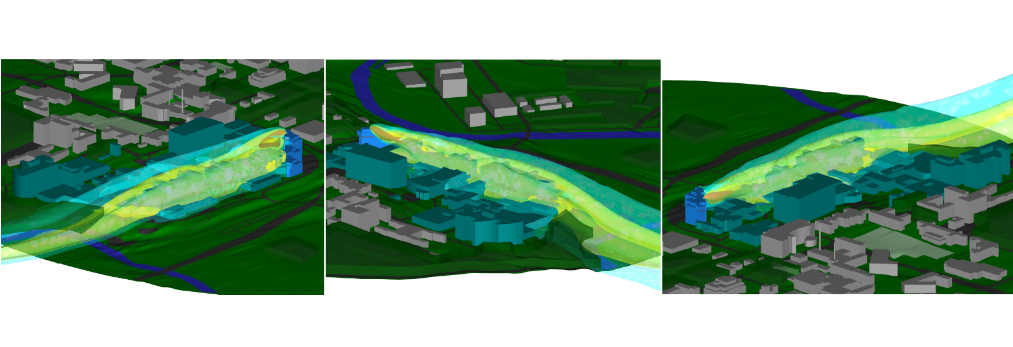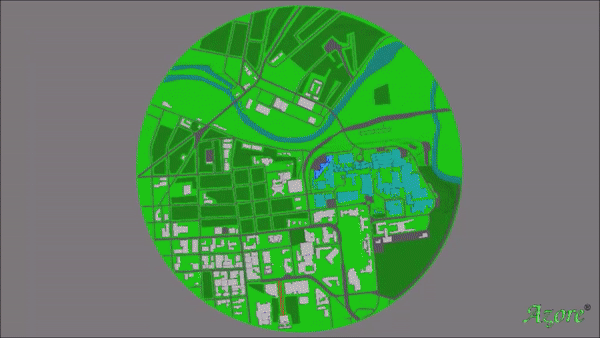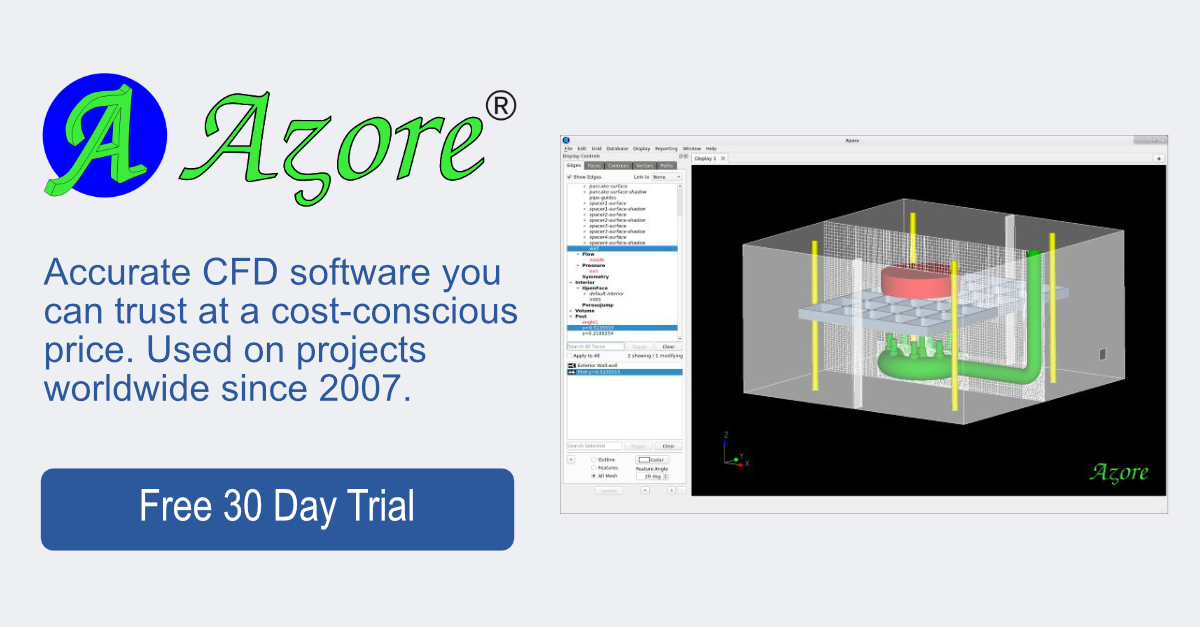Medical Campus Dispersion Analysis
by Jeff Everett and Paul Harris
A primary consideration in the design of building ventilation systems and exhaust stacks is to ensure that the stack exhaust plume is adequately dispersed into the atmosphere. At a medical campus research center, the small amounts of gases released from laboratory experiments are collected in fume hoods and exhausted through vent stacks on the roof of the building. There was concern that these gases might be blown down to ground level or be entrained into other nearby buildings before the gas concentration had been diluted to a harmless level. Given the variability of the wind, the variety of nearby locations the gases might travel to, and the low concentration of the gases involved, physical testing to determine the gas dispersion would have been time consuming and costly. Therefore, Computational Fluid Dynamics (CFD) modeling was chosen to analyze the plume behavior under a range of different ambient wind conditions and fume hood gas flow rates.

A three-dimensional CFD model was constructed of the exterior of the laboratory buildings, the nearby medical campus, and the surrounding community. Topological data of the ground elevation, which varied significantly across the model domain, was imported from USGS survey records, and integrated with the building geometry. Over 100 million computational cells were included in the CFD mesh. The mesh had a great variation in length scales; the domain was nearly a mile across, but also included the detail of the exhaust stacks on the roof of the laboratories, with carefully selected cell sizing parameters to accurately track the plume dispersion. Using the Azore CFD solver, air flow patterns were calculated across the domain based on several different wind speeds and directions. The exhaust gases emitted from the stacks on the roof of the laboratory were also tracked as a separate species. The HPC parallel processing of the Azore solver allows for the timely calculation of multiple solutions with varying inputs, even with such a large number of computational cells.

Once the CFD simulations had converged, Azore's integrated post-processing tool was used to quantify the gas concentration at several critical locations and visualize the dispersion of the gas species spacially. The post-processing workflow includes generation of gas concentration statistics, color contour plots, and animations, all of which can be scripted within Azore for easy, accurate, and repeatable analysis of multiple cases. Visualization of the gas dispersion using color contours and path lines superimposed on the geometry of the medical campus buildings clearly communicates the flow patterns and gas concentration levels at key locations. The CFD animation, created with the Azore software, shows the behavior of the stack exhaust gas under a particular wind scenario.
Watch the full length video: Medical Campus CFD Simulation

